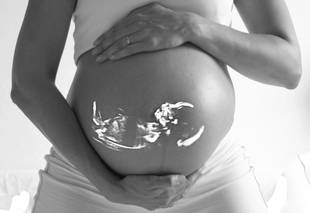
How Life Begins
New life begins with the union of a male sex cell and a female sex cell. These sex cells are developed in the reproductive organs, the gonads. The male sex cells, the spermatozoa (singular: spermatozoon), are produced in the male gonads; the testes, while the female sex cells, the ova (singular: ovum), are produced in the female gonads, the ovaries.
Male and female sex cells are similar in that they contain chromosomes. There are twenty-three chromosomes in each mature sex cell, and each chromosome contains genes, the true carries of heredity. A gene is a minute particle which is found in combination with other genes in a stringlike formation within the chromosome. It has been estimated that there are approximately 3,000 genes in each chromosome. These are passed on from parent to offspring.
Male and female sex cells also differ in two important ways. First, in the mature ovum there are twenty-three matched chromosomes while in the mature spermatozoon there are twenty-two matched chromosomes and one unmatched chromosome which may be either an X or a Y chromosome. The function of X and Y chromosomes will be discussed later in relation to sex determination.
The second way in which male and female sex cells differ is in the number of preparatory stages of development they pass through before they are ready to produce a new human being. While all sex cells, male or female, must go through preliminary stages of development, male cells go through two preliminary stages – maturation and fertilization – while female cells go through three preliminary stages – maturation, ovulation, and fertilization.
Maturation
Maturation is the process of chromosome reduction through cell division: one chromosome from each pair goes to a subdivided cell, which in turn splits lengthwise and forms two new cells. The mature cell, which contains twenty-three chromosomes, is known as a haploid cell. Maturation of sex cells does not occur until sex maturity has been attained, following the onset of puberty in both boys and girls.
In the case of the spermatozoon, there are four new cells, the spermatids, each of which is capable of fertilizing an ovum. In the division of the ovum, one chromosome from each pair is pushed outside the cell wall. This new cell is known as a polar body. Three polar bodies are formed in the process of division. Unlike the spermatids, the polar bodies cannot be fertilized, while the fourth cell, the ovum, can. If, however, the ovum is not fertilized, it disintegrates and passes from the body with the menstrual flow.
Division of the chromosomes during the maturational process is a matter of chance. Any possible combination of chromosomes from the male and female may be found in a new cell after division. It has been estimated that there are 16,777,216 possible combinations of the twenty-three chromosomes from the male and the twenty-three from the female sex cells.
Ovulation
Ovulation is a preliminary stage of development limited to the female sex cells. It is the process of escape of one mature ovum during the menstrual cycle. It is believed that the two ovaries alternate in producing a ripe ovum during each menstrual cycle.
In nonidentical multiple births, two or more mature ova are released from the ovaries. Whether they are released from the same or from both ovaries is still not known nor is it known why more than one mature ovum is released during each menstrual cycle, which is the usual pattern.
After being releases from one of the follicles of the ovary, the ovum finds its way to the open end of the Fallopian tube nearest the ovary from which it was released. Once it enters the tube, it is propelled along by a combination of factors: cilia, or hairlike cells which line the tube; fluids composed of estrogen from the ovarian follicle and a mucus form the lining of the tube; and rhythmic, progressive contractions of the walls of the tube. When the length of the menstrual cycle is normal, approximately twenty-eight days, ovulation occurs between the fifth and the twenty-third days of the cycle, with the average on the eleventh day.
Fertilization
Fertilization, which occurs at the time of conception, is the third stage of development preliminary to the beginning of a new life. It normally occurs while the ovum is in the Fallopian tube. More specifically, it is generally believed that fertilization takes place within twelve to thirty-six hours and usually within the first twenty-four hours after the ovum has entered the tube. During coitus, or sexual intercourse, spermatozoa are deposited at the mouth of the uterus. Through strong harmonic attraction, they are drawn into the tubes, where they are aided in making their way up by rhythmic muscular contractions.
After a spermatozoon has penetrated the ovum, the surface of the ovum changes in such a way that no other spermatozoon can enter. After the sperm cell penetrates the wall of the ovum, the nuclei from the two cells approach each other. There is a breakdown in the membrane surrounding each nucleus, and this allows the two nuclei to merge. Thus the species number of chromosomes, forty-six, is restored, with one half coming from the female cell and the other half coming from the male cell.


















